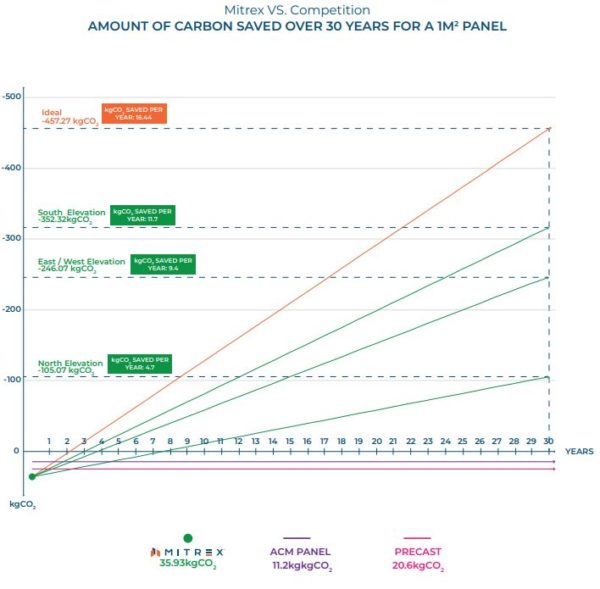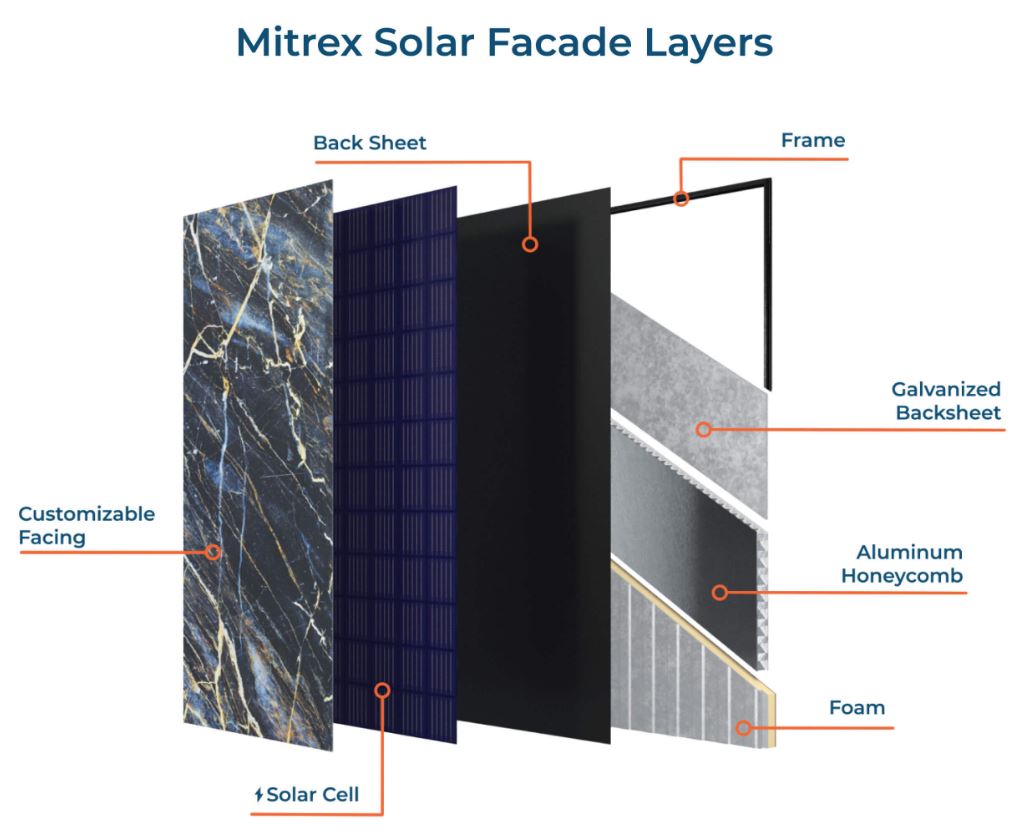Mitrex, based in Toronto, is a manufacturer of building-integrated photovoltaics (BIPV). One of the company’s BIPV products is a solar façade, essentially an exterior wall with productive photovoltaics stealthily integrated into a building.
Mitrex said it is now planning the tallest solar façade in North America, a 6,000 square foot BIPV system that will power a student residence building at St. Mary’s University in Halifax, Nova Scotia. The decentralized energy source supplies local energy and is connected with the traditional grid to export excess production. It is also a microgrid, capable of functioning autonomously from the electric grid, and able to operate during power outages.

The microgrid application not only can be used for power resilience during outages but can also be intelligently operated to adapt to economic conditions, potentially providing the university with savings during times of high energy prices and peak demand.
Mitrex will work with DSRA Architects, Dillon Consulting, BMR Structural Engineering, to install the project, with construction overseen by EllisDon Corporation and Markland Construction. Construction is expected to be complete in early 2023.
Mitrex said the façade will consist of solar cladding, accented by vertical, semi-opaque solar glass integrated into the windows. The design of the cladding panels is planned to be a delicate combination of school colors with a subtle reveal of solar technology, said the company.
The BIPV maker integrates photovoltaics with a myriad of locations, including roofs, railings, façades, windows and more. “Mitrex aims for a future where every sun-touched surface generates energy with visually appealing solar products,” said the company in a press release.
“The building community needs to think of micro-grids as a must and not an option and rethink their contributions to carbon emissions on every level from carbon used to make the products to powering the structure post-construction,” said Danial Hadizadeh, CEO of Mitrex.

Image: Mitrex
Today, construction operations and building materials fabrication cause as much as 40% of annual carbon emissions. Hadizadeh said that he believes BIPV will replace “outdated solutions” to improve the carbon footprint of buildings. The company provides a high level of transparency in the total carbon lifecycle of its products.
Mitrex’s solar façade panels come in a variety of colors and designs to match the buildings they are integrated with and have a variety of structural designs that can either let the BIPV lay vertical on the wall or be tilted for increased production.

This content is protected by copyright and may not be reused. If you want to cooperate with us and would like to reuse some of our content, please contact: editors@pv-magazine.com.









By submitting this form you agree to pv magazine using your data for the purposes of publishing your comment.
Your personal data will only be disclosed or otherwise transmitted to third parties for the purposes of spam filtering or if this is necessary for technical maintenance of the website. Any other transfer to third parties will not take place unless this is justified on the basis of applicable data protection regulations or if pv magazine is legally obliged to do so.
You may revoke this consent at any time with effect for the future, in which case your personal data will be deleted immediately. Otherwise, your data will be deleted if pv magazine has processed your request or the purpose of data storage is fulfilled.
Further information on data privacy can be found in our Data Protection Policy.